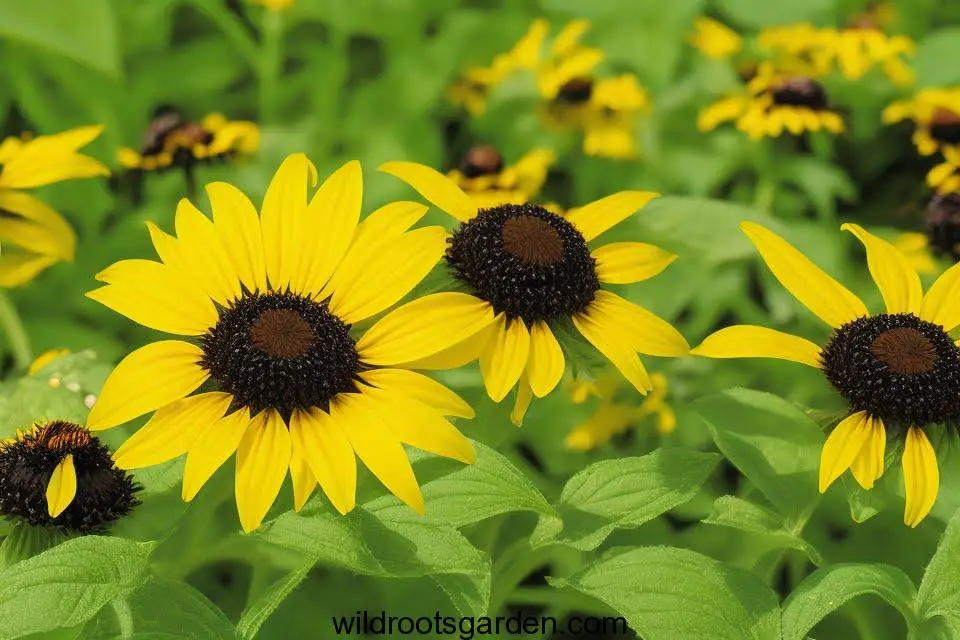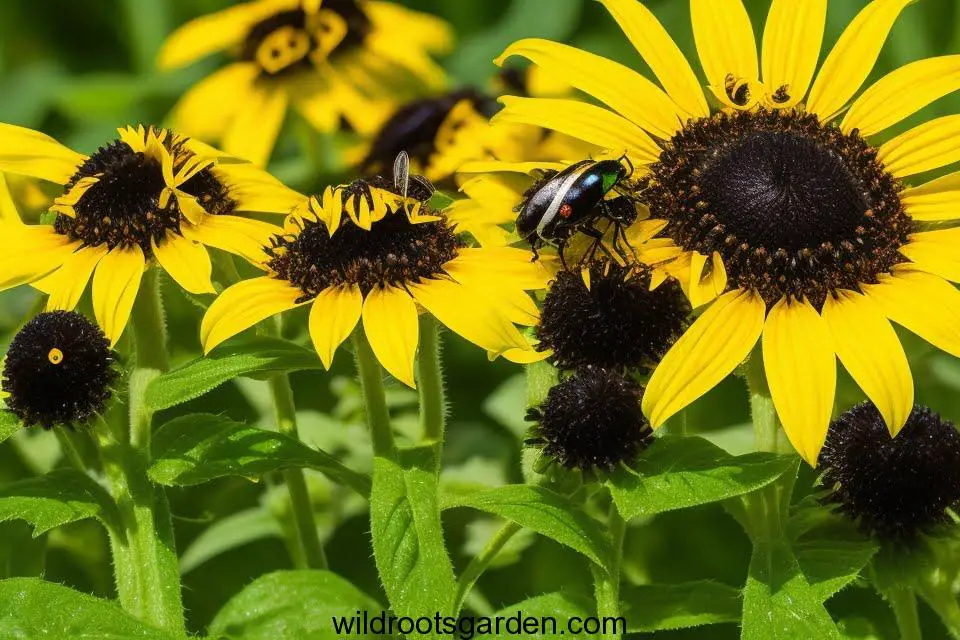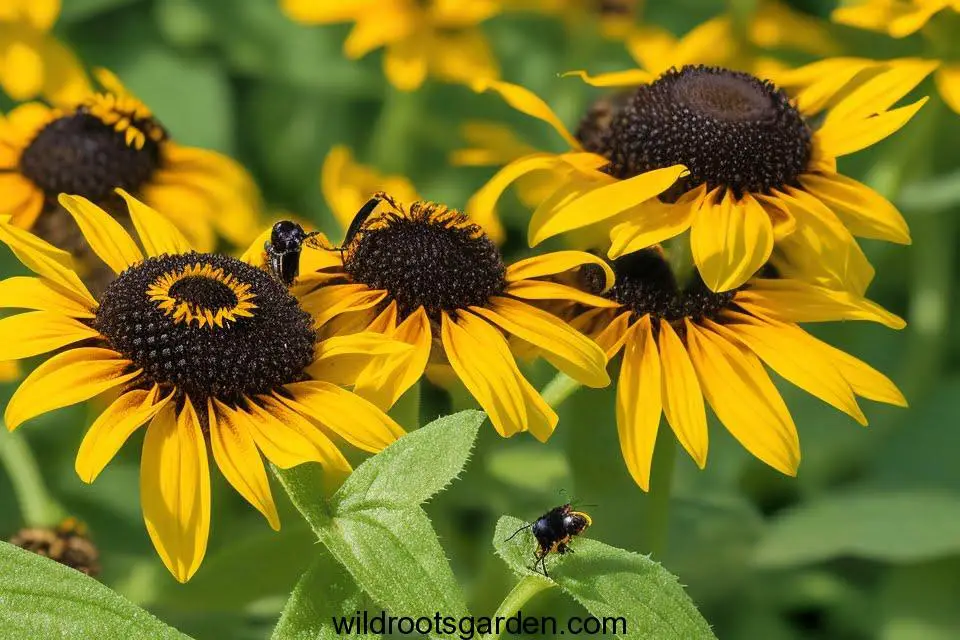Aphids on Black-Eyed Susans. Black-Eyed Susan aphids exhibit an ordinary yet fascinating ecological phenomenon. These little sap-sucking insects are drawn to Black-Eyed Susans, the colorful and beloved wildflowers, which have an effect on both flora and animals. The complex relationships between aphids and Black-Eyed Susans are explored in this introduction, along with the factors affecting these interactions, any ecological ramifications, and potential management approaches. Understanding and protecting these interactions is crucial for maintaining the delicate balance of ecosystems, which is highlighted by unraveling this complex dance between the insect and the bloom. Join us as we explore the intriguing world of aphids on Black-Eyed Susans and reveal the intricate details of nature.

Understanding Aphids:
What are Aphids?
Little, soft-bodied insects with the scientific name Aphidoidea, or aphids, are members of the superfamily Aphidoidea. They are known as plant lice and can be seen on a variety of plants, including decorative flowers like Black Eyed Susans. Aphids often have a pear form and can be green, brown, black, yellow, or even pink in color.
Aphid Species
There are various aphid species, and each has a particular host plant preference. The Green Peach Aphid (Myzus persicae) and the Black Bean Aphid are two frequent aphid species that attack Black Eyed Susans (Aphis fabae). To properly implement the necessary control measures, it is imperative to identify the exact species of aphid.
Aphids on Black-Eyed Susans:
Appearance and Identification
Black Eyed Susan aphids can be recognized by their small size, soft bodies, and an assortment of colors. They typically gather together on the underside of leaves or along plant stems. Black Eyed Susan plants may wilt, grow slowly, have yellowing foliage, and have deformed flowers when they are afflicted. These microscopic bugs will be found if the plant is carefully examined.
Life Cycle of Aphids
Aphids have a quick reproductive cycle, which enables their numbers to increase exponentially quickly. They may reproduce sexually and asexually, with females having the ability to give birth to live young even when they are not mated. They can quickly invade plants thanks to their flexibility. Effective control of aphids requires knowledge of their life cycle.
Damage Caused by Aphids
Aphids use their piercing mouthparts to collect nutrients from the plant sap from which they eat. Aphids weaken plants, alter leaves, and distort blossoms on Black-Eyed Susans, among other effects. Aphids also release honeydew, a sticky material that can promote the formation of sooty mold and draw ants. To avoid the plants from suffering major harm, prompt intervention is required.

Prevention and Management:
Cultural Control Methods
Black-Eyed Susan infestations can be avoided by using cultural management techniques. They include procedures like routine plant inspection, preserving plant health with appropriate fertilizer and watering, and getting rid of weeds that can act as aphid substitute hosts. Aphids can be repelled by pruning affected plant sections and encouraging good air circulation.
Natural Predators and Biological Control
The population of aphids can be reduced by introducing natural predators, such as ladybugs, lacewings, and parasitic wasps. These helpful insects aid the garden’s natural balance by eating aphids. A sustainable strategy for managing aphids is encouraged by the use of biological control techniques.
Chemical Control Options
Chemical control strategies may be taken into account in extreme circumstances or when other control measures prove unsuccessful. It is crucial to select insecticides with labels designed especially for aphids and carefully follow the directions. Systemic pesticides can be useful, but they should only be used with care because they can harm helpful insects as well. Before using chemical control, it is important to speak with a specialist or a local extension agency.
Organic Approaches for Aphid Control:
Homemade Remedies
Without using chemicals, aphids can be controlled using a number of DIY methods. They include remedies produced with neem oil, soap, vinegar, garlic, or other diluted components. These DIY sprays can discourage aphids and lessen their harm by being applied directly to the afflicted plants.
Companion Planting
Aphids can be repelled organically by companion planting. Due to their potent fragrances, companion plants like marigolds, chives, and catnip can keep aphids away from Black Eyed Susans. Intercropping with plants like mint or basil can also confuse aphids and make it more difficult for them to find their preferred hosts.

Attracting Beneficial Insects
Long-term aphid control can be achieved by creating an environment that draws helpful insects. Ladybugs and hoverflies, which eat aphids, can be attracted by planting flowers like daisies, cosmos, and yarrow. These natural predators will flourish in a variety of nectar-rich plants available, which will support a healthy ecology.
**In conclusion, the study of aphids on Black-Eyed Susans provides valuable insights into the intricate web of nature’s interconnections. These tiny insects, while seemingly insignificant, play a pivotal role in shaping the health and vitality of these beloved wildflowers. Understanding their relationship unlocks the potential for eco-friendly pest management practices, promoting the sustainable coexistence of flora and fauna. As we marvel at the resilience and adaptability of these delicate flowers and their tiny visitors, let us recognize the significance of safeguarding biodiversity and preserving the delicate balance within our ecosystems. By nurturing the symbiotic dance between aphids and Black-Eyed Susans, we embrace a harmonious and sustainable future for our natural world.
FAQs:
Q: Are aphids harmful to humans?
A: No, aphids are not harmful to humans. They primarily pose a threat to plants.
Q: Can aphids be beneficial in any way?
A: While aphids are considered pests, they serve as a food source for beneficial insects and contribute to the overall ecosystem balance.
Q: How can I prevent aphids from infesting my garden?
A: Regularly inspect your plants, maintain good plant health, and introduce beneficial insects or companion plants that deter aphids.
Q: Can I use chemical insecticides to control aphids?
A: Chemical insecticides should be used as a last resort and only when necessary. Always follow the instructions provided and consider the potential impact on beneficial insects.
Q: Are there any other plants that aphids commonly infest?
A: Yes, aphids can infest a wide range of plants, including roses, vegetables, and fruit trees.

